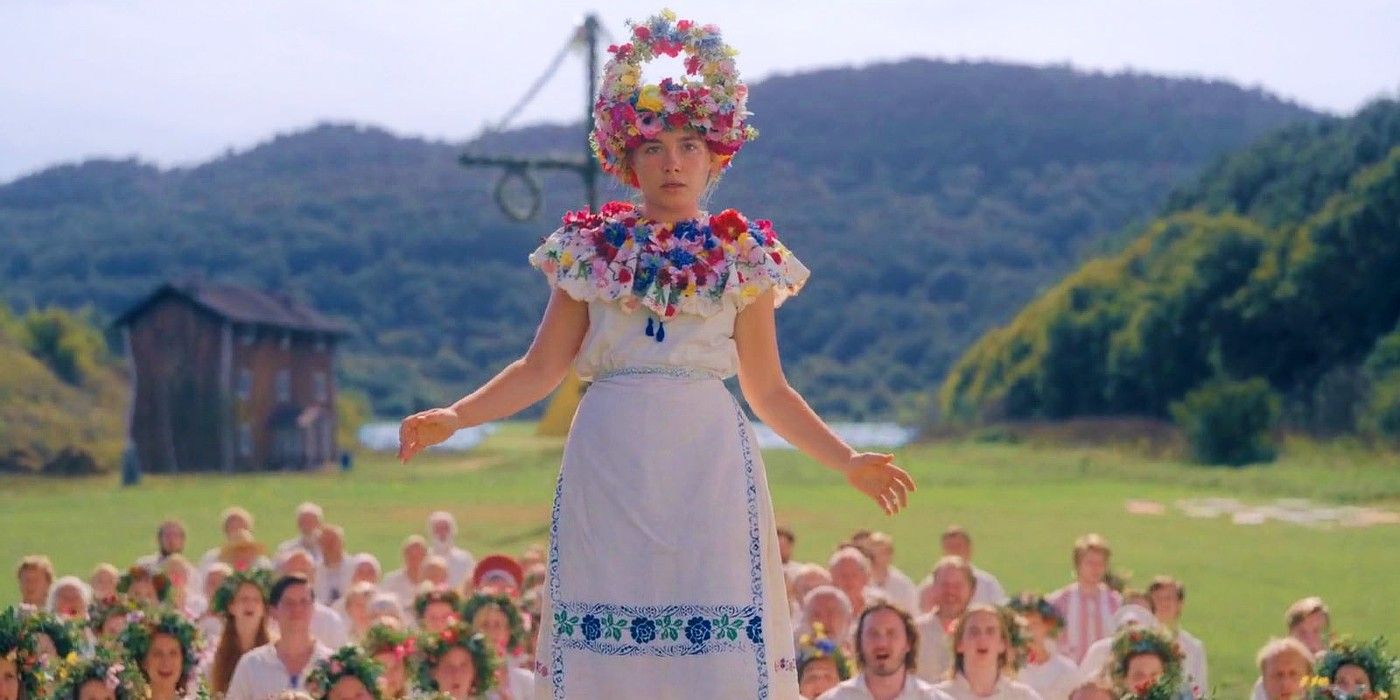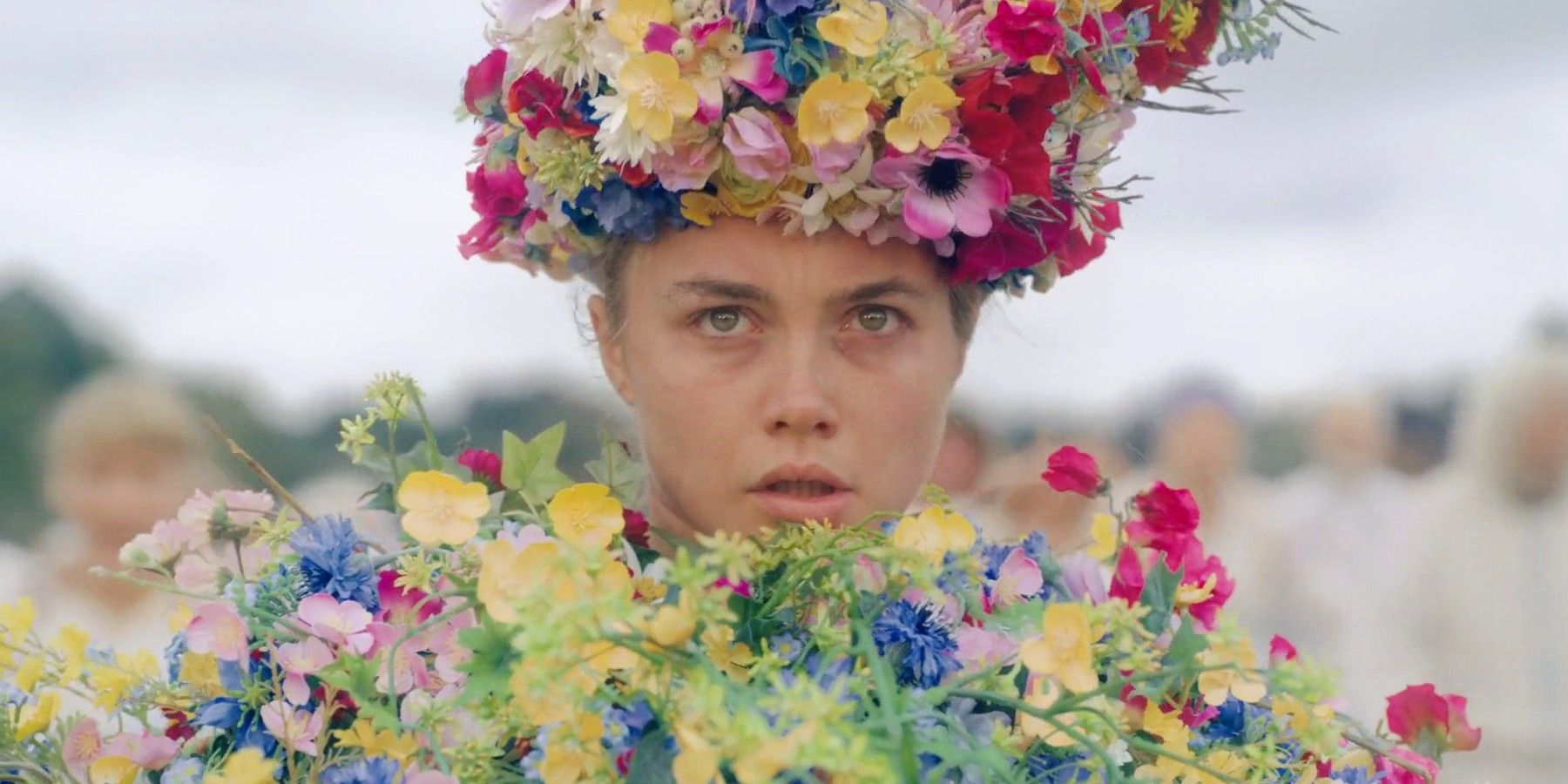Ari Aster’s 2019 folk horror film Midsommar is a gruesome story about the traditions of the Swedish mid-summer festival. While the final cut of the film was enough to disturb an audience, the original script was much more violent and unsettling. Midsommar follows Dani (Florence Pugh) on the path to becoming the May Queen. On the way to meet her destiny, the group she came to Sweden with begin to disappear one by one only to have their bloody ends revealed when the film comes to a slow tenuous close.
Following the success of his 2018 horror film Hereditary, Ari Aster created a film that was horrific in ways that the genre does not commonly utilize. The landscape is lush, bright, and filled with life; whereas horror commonly makes use of darkness, Aster takes hold of its exact opposite. Midsommar has been compared to fellow folk horror films such as the classic 1973 Robin Hardy film The Wicker Man for its use of the mid-summer tradition and featuring a cult. If Aster had the opportunity to include what was cut in the final script, the film would have taken on an entirely different tone than it has now.
The final product was ultimately a success among fans of Aster’s work but it left others wanting more. In the months leading up to its release, critics and fans expected to see a film similar to the gruesome and chaotic Hereditary. The original script for Midsommar could have given audiences that and so much more.
Midsommar’s Unsettling Original Script
Aster’s original script included deaths and violence with much more detail than the final cut. Undoubtedly, Midsommar is brutal enough as it is but it had potential to be even more gruesome than its predecessor. Perhaps the most disturbing moment cut from the film was the 15-minute long video of a girl cutting her pubic hair shortly after starting her period for the first time. She mixes her menstrual blood into a coffee cup and the pubic hair into pancakes that she then feeds to a boy to make him fall in love with her. This story is still in the film, except it is only briefly displayed on a quilt with no explanation to what it means.
There are several rituals cut from the script that feature the mutilation of animals, all of which include nine participants and/or animals. The addition of the continual use of the number nine could have created a whole layer to the film where repetition matters. Furthermore, the last nine contenders for the May Queen crown were meant to jump over fences and go back to dancing. This is not violent or gruesome by any means but it surely would have added to Aster’s ability to provoke an audience to think deeper about minuscule things.
The most violent scenes cut from the film were Simon’s true final form and Josh’s (William Jackson Harper) bloody death. In the original script, Simon was supposed to hang by his Achilles tendon upside down with horseshoes nailed into his feet rather than the bloody butterfly the audience saw. Josh’s death scene has his abdomen cut open as he is chained to a fence left to bleed out and die. By not including these much more violent, disturbing, and gruesome scenes in the film, Aster avoided making another version of Hereditary. Instead, he allowed for Midsommar’s ambiguous and lighthearted tone force the viewer to experience an array of tenuous emotions.


